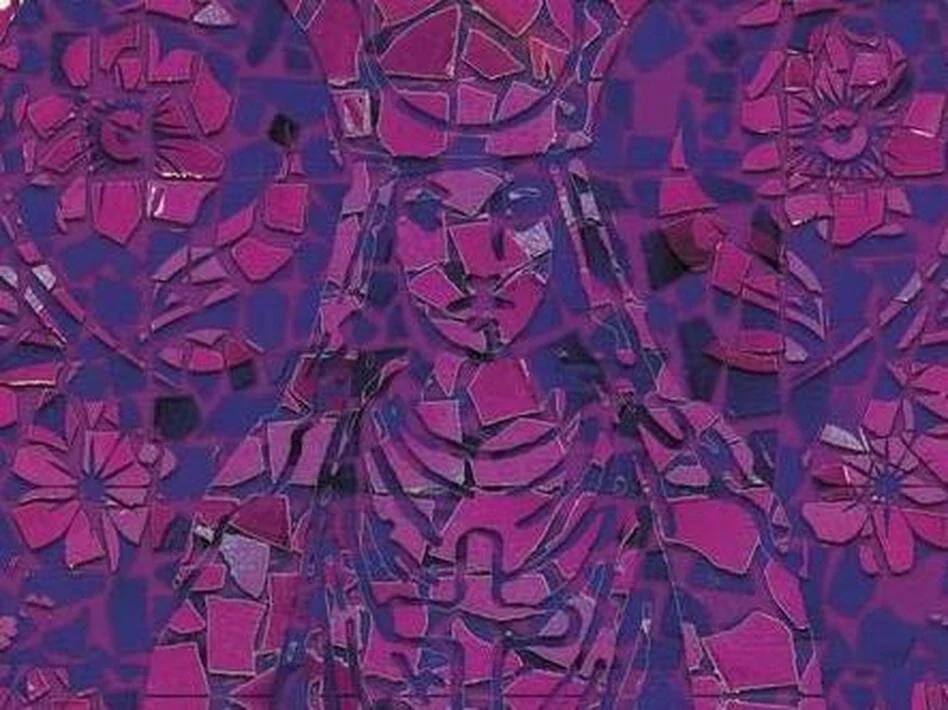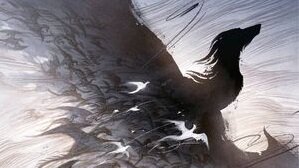Cassie X, the hero of Sarah Rose Etter’s debut novel, is the third generation of women in the X family born with a knot. “Picture three women with their torsos twisted like thick pieces of rope with a single hitch in the center.” The knot is the novel’s primary image: it’s what defines Cassie, and in many ways what drives The Book of X, so it’s tempting to jump immediately to asking what universal affliction the knot must symbolize. But before anything, the knot is a literal knot in Cassie’s body, and has to be reckoned with as such. “Our knots are simple: Overhand. Our abdomens twist in and out just once, our bodies wrapping back into themselves, creating dark caverns, coiled as snakes.”
Body parts are everywhere in The Book of X’s surreal, oblique imagescape. Cassie grows up by the Meat Quarry, where her father and brother sniff out veins of raw meat in the earth and pull it, bare-handed, out of exposed canyon walls. As we follow Cassie from lonely girlhood into life as a young woman in a nameless city, we dive into Cassie’s visions of body parts in attitudes of transit, dislocation, and consumption: she imagines rivers thick and spawning with thighs, and throat fields, where customers pay for something to strangle. The same attitudes fall on Cassie during sex, as each of her lovers reckons—sooner or later, for better or worse—with her impossible body part:
IN THE DIM LIGHT OF MY APARTMENT, HE
is still smoking.
“I don’t really smoke in here,” I say.
“I do!” he says, smoking.
He stubs the cigarette out and presses his mouth against mine. I become the plume. We move our bodies toward the bed, his hands already on my breasts.
“You’re the full meal,” he whispers.
I picture it like that: My body as a cooked carcass, a side, a dessert, a table set to serve. He runs his hands over the knot, and he doesn’t hesitate about it, not even once.
The novel is told through hundreds of extremely short vignettes like the above, with first lines pitched in emphasis and plenty of whitespace between. The novel itself is thus an assemblage of parts, formally constructed to forefront the question: are any of us more than that? “I love motors,” Cassie’s best lover, a mechanic, says: “The sum of all parts makes them come alive. That’s fascinating to me. … Did you know we’re all engines, because by their most basic definition, engines are machines that convert energy into motion?”
A novel that asks this kind of question is expected to posit something by the end, like love, like God, maybe, that makes us more coherent than that. Credit to Etter, The Book of X follows its ambivalence through to the bitter end, though that ending makes for a disjointed, somewhat baffling sum-of- parts.
Sarah Rose Etter (photo credit: Natalie Graf)
What won me over was Etter’s superb prose style, which inevitably must be described in images of meat: muscular, lean, chewy with blood and beauty, rich with a peculiar iron humor. It’s true of her quieter images—“his mouth tastes like salt and metal. I touch his hair and it is like touching a horse”—and her most psychotic ones. I won’t quote the whole passage here, but let’s just say if you’ve ever imagined headless lovemaking, you’ve probably never also imagined your hearts coming up through your necks, “peeking out like big red pearls,” and how unnervingly wonderful this turns out to be. Etter’s focus on parts over wholes achieves one of the most relentless, lurid, and emotional expositions of a woman’s body as a body I’ve ever read.
Etter also brings a rare attention to family over the course of Cassie’s life. As in many outsider coming-of-age stories, Cassie’s mother is an antagonist in the early scenes, a vain and manic conformist who starves, plucks, and berates young Cassie into a reasonably close image of a normal girl. But as Cassie endures the hell of school, the grind of city hook-ups, and a harrowing physical debilitation, we gain new insight into Mrs. X, and what she’s trying to teach Cassie about being a woman with a knot in the world. Our sense of mothers and daughters doubles back through its own knot. That’s how I, at least, approach the novel’s prime image: a burden that ties each generation of women’s experience, their suffering and resilience, to the ones before. If that’s all the coherence we get, it’s still a powerful and deeply felt one.












Cadwell Turnbull's new novel — the first in a trilogy — imagines the hard, uncertain work of a fantastical justice.